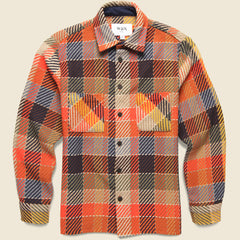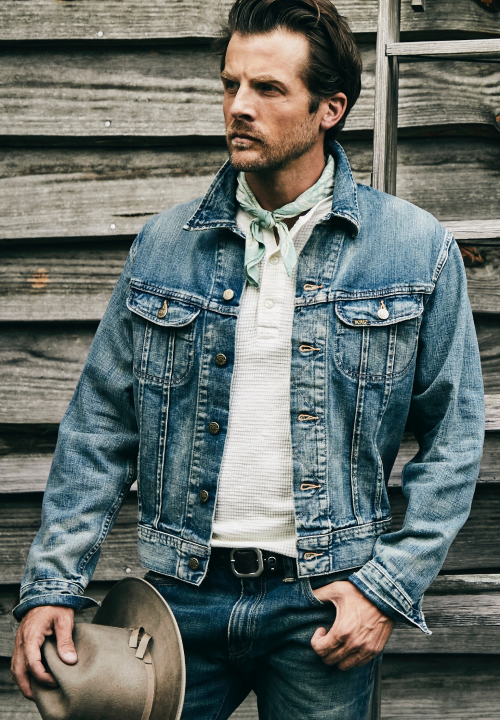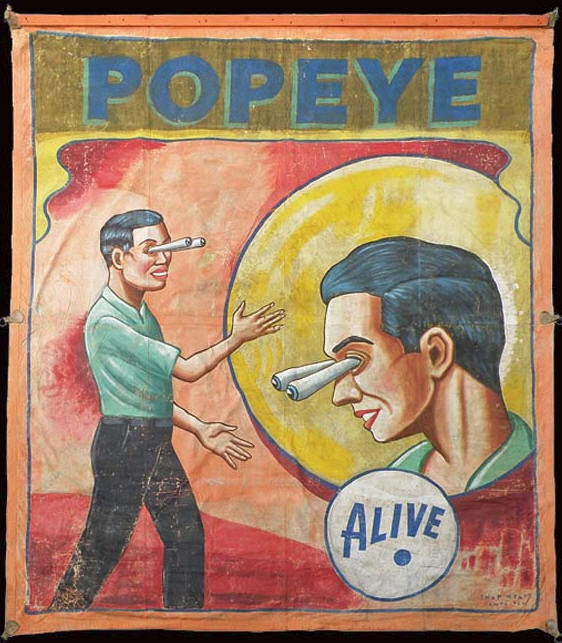The days of sideshows selling glimpses of humanity at its most extreme may be gone—for the most part, anyway—but the bright, brash artwork that once advertised the practice is still very much with us. And among the handful of artists who specialized in this unique genre of canvas banner painting during the middle decades of the 20thcentury, few garner as much respect or attention as David C. “Snap” Wyatt. Long relegated to the realm of historical curiosities, his paintings are increasingly being recognized for what they truly are: stunning examples of a distinct and vanishing American art form.
Snap Wyatt’s career began when he chose to do something most children only dream of: he ran away with the circus. At the age of fourteen, he was lured from his home in Asheville, North Carolina by the vagabond appeal of life under the big top. He first learned to perform in magic shows and mind-reading acts, but eventually found his true calling when he began touching up the motley-colored banners that pitched the circus’ sideshows. He would go on to study art at the Cooper Union in New York City during the Great Depression, and perfect his trade at a studio in Coney Island. He resettled outside of Tampa following World War II, where he gained a reputation as one of the fastest and most productive of the great sideshow banner artists of the era. He could complete a ten-foot banner in a single day, at a going rate of $85, and he often finished as many as 200 banners in a single year.
Today, however, vintage sideshow banners are difficult to come by, and they sell at prestigious auction houses for tens of thousands of dollars—a far cry from the original prices charged by their humble creators. But their value to our collective heritage is immeasurable, and they have earned their place in museums and galleries alongside the other great works of the American canon.
To see more examples of Snap Wyatt’s vintage sideshow banners, click here.

















